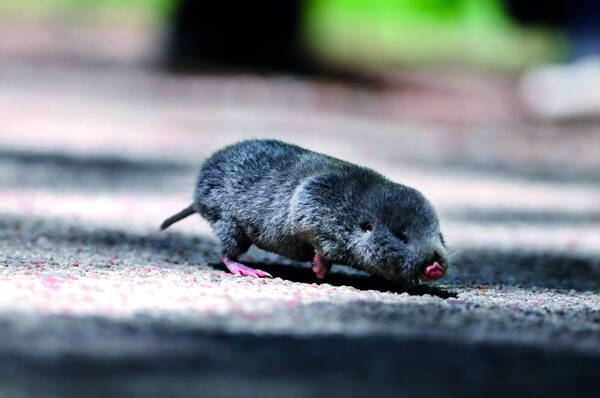Eospalax rothschildi
IUCN
LCBasic Information
Scientific classification
- name:Eospalax rothschildi
- Scientific Name:Eospalax rothschildi,Southern zokor, ground mouse
- Outline:Rodents
- Family:Rodentia Cricetidae Zokor
Vital signs
- length:160-190mm
- Weight:200g
- lifetime:
Feature
The hair on the head, back and sides of the body is gray-brown, with a darker gray color and slightly rusty brown at the tips.
Distribution and Habitat
It is endemic to China. It is distributed in Gansu, Shaanxi, Sichuan and Chongqing.
Rothschild's zokor mainly lives in mountains and hills above 1,200 m. It generally chooses loose soil in forests, grasslands and farmland as its habitat. [2] However, it is difficult to see Rothschild's zokor living in environments with thin soil, a lot of gravel or hard soil.
Appearance
The individual is small, with a body length of about 160mm. The claws are small and slender. The tail is short, longer than the hind legs, and the back is densely covered with short hair. The fur of adults is darker, ranging from yellowish brown to dark grayish brown, with rusty red hair tips. The color of subadults is black-gray. Some individuals have white spots on the forehead. The area around the nose pad is usually dirty white. The occipital area at the back of the skull protrudes backwards. The back of the skull is bulging, and the mid-occipital ridge is weak. The teeth are thin and weak.
Details
The species status of Roth's zokor is stable, but the genus status is controversial. Sometimes the species is placed in the genus <Myospalax>, subgenus <Eospalax>. Some scientists upgrade the subgenus to the genus Eospalax. Now most people agree with the latter opinion. There are 2 subspecies.

Rothschild's zokor lives underground for a long time, and its vision has deteriorated, but its hearing and senses are sensitive. It is afraid of water, wind, and light. When it is in an arch hole, it turns around and avoids places where water accumulates in a depression. Once the ground tunnel is destroyed, cold air pours in or. When light penetrates the hole, the zokor can quickly feel it, and rush to the hole in a short time (depending on its distance from the hole), and quickly push the soil to block the hole.
The cave structure of Roth's zokor is complex, which can be divided into mouse nests, tunnels, warehouses, hidden rooms, manure holes, etc. These tunnels are interconnected to form the underground caves where Roth's zokor lives. Mouse nests are generally dug in hard soil, 57-180mm deep from the ground or in rock crevices. The nest is round, 20cm in diameter, 10cm high, and 57cm from the ground. It is built with many fragments such as dry thatch, wormwood stalks, sedge, bamboo leaves, etc., with high surroundings and a sunken nest in the middle. The zokor rests in it and also produces mice in it. A zokor generally has two nests: one in the mouse nest, for winter or breeding season, and the other in the middle of the tunnel, for daily living. Male and female adult mice live separately except during mating and reproduction. One Rothschild's zokor has 2 to 5 tunnels, which can be more than 60 meters long in total. The tunnels have many forked holes every 1 to 2 meters. The cross section of the tunnel is oblate, generally slightly larger than the mouse body, 9 cm wide and 7 cm high. The cave wall can be seen bulging on the ground to form irregular cracks of 3-5 cm, and no earth mounds are dug. Rothschild's zokor has a large appetite and stores food. In autumn, it forages for a large amount of food and stores it in the warehouse to prepare for winter consumption. One adult mouse has 3 to 5 warehouses, generally near the mouse nest and in the middle of the tunnel. The hidden cave is generally near the nest room, dug deep in the hard soil, and it quickly escapes into hiding when it encounters enemies or is chased by humans. The hidden cave often has only an entrance but no exit.

Rothschild's zokor has a very diverse diet, including almost all kinds of crops, vegetables, weeds and tree roots.
Rothschild's zokor begins to reproduce in April, and only during the breeding season do female and male adults live together. It reproduces once a year, with 1 to 5 litters. The young mice can live independently after 30 to 45 days.
Listed in the 2008 Red List of Endangered Species of the World Conservation Union (IUCN) ver 3.1 - Least Concern (LC).








